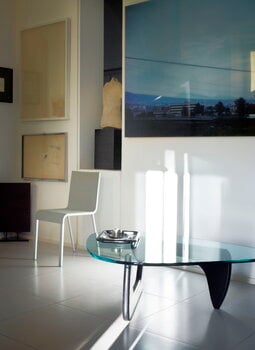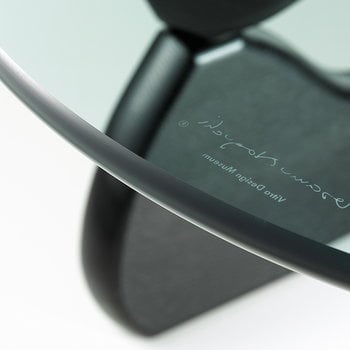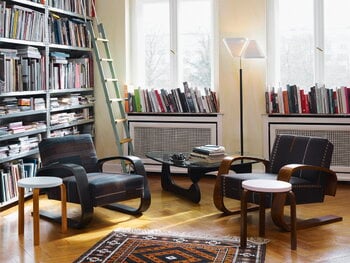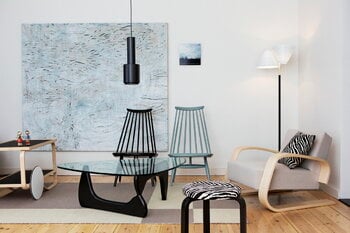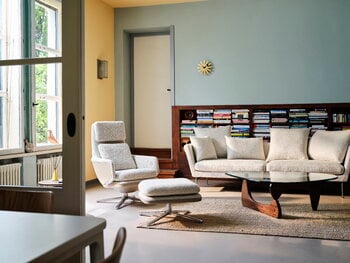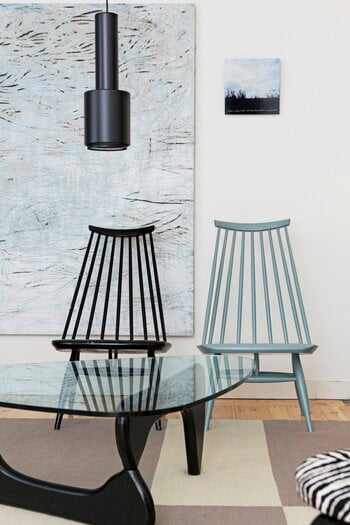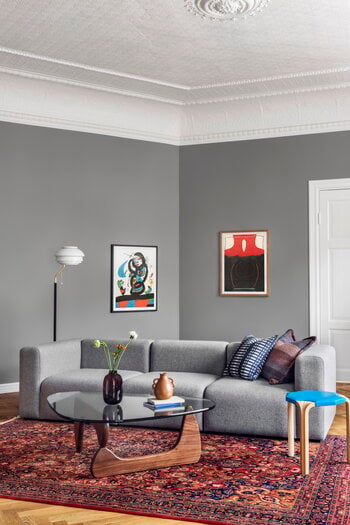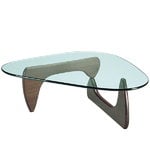Vitra’s Noguchi coffee table, designed by Isamu Noguchi in 1944, unites form and function in a harmonious way. The iconic table is built on two identical wooden elements, which support the rounded tabletop made of thick, durable glass. The sculptural, organic and abstract design of the table is reminiscent of Noguchi’s bronze and marble sculptures, and the Japanese-American designer has considered the table as his best piece of furniture design.
Noguchi designed the first version of the iconic table in 1939 for A. Conger Goodyear, the founder of New York’s Museum of Modern Art. The furniture manufacturer Herman Miller asked Noguchi to design a similar table for his own collection – described as a functional sculpture, the Noguchi table was released in the United States in the late 1940s. In Europe, the table is manufactured by Vitra.


